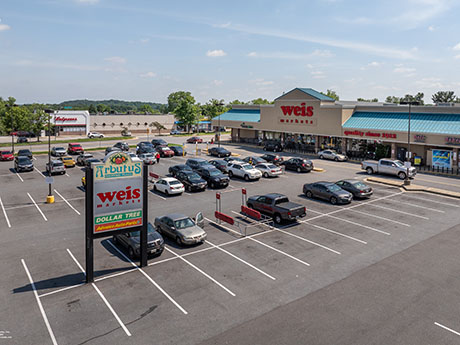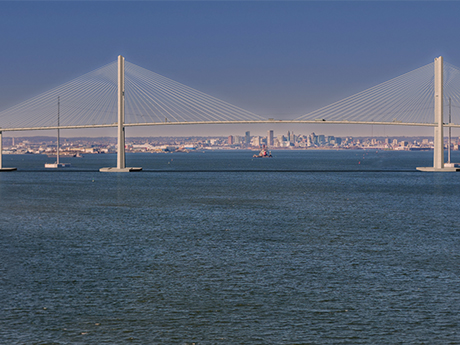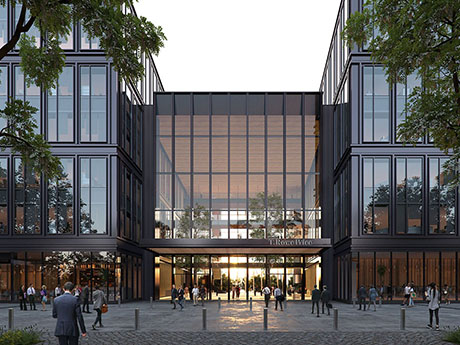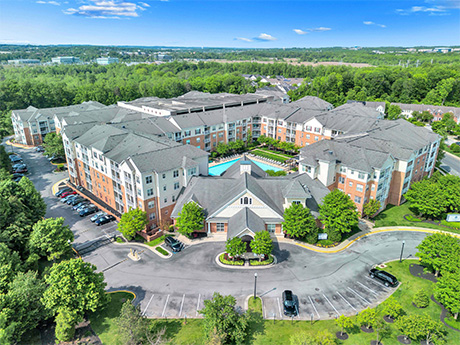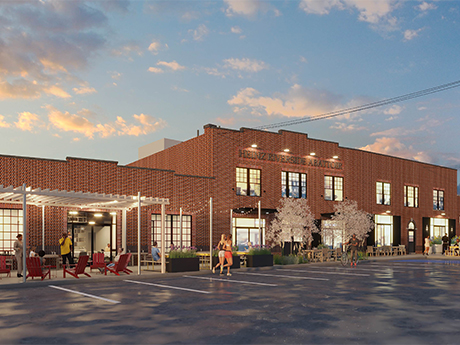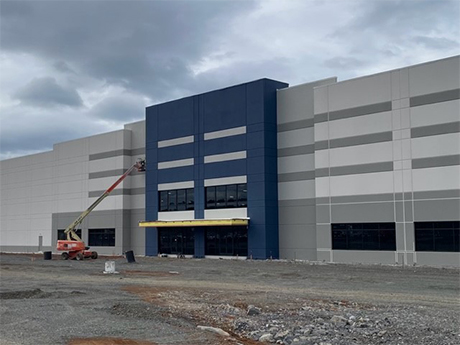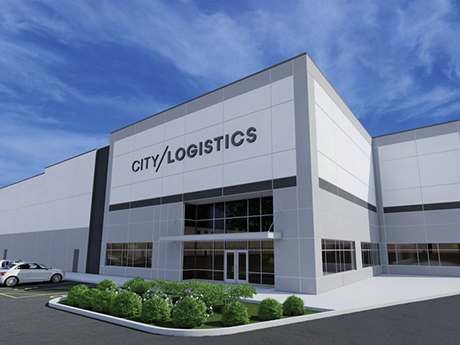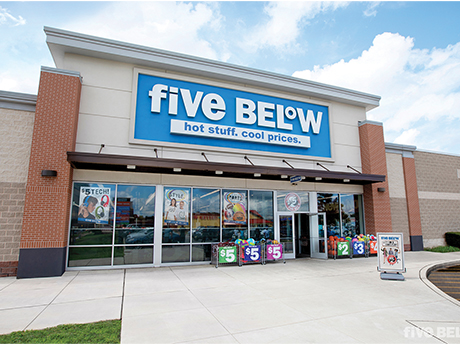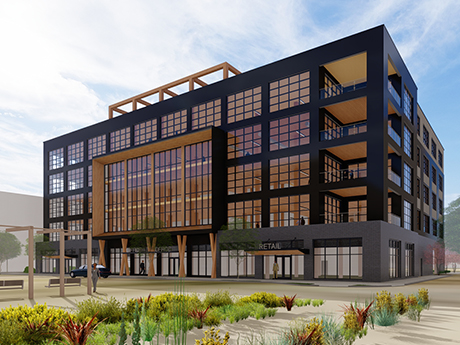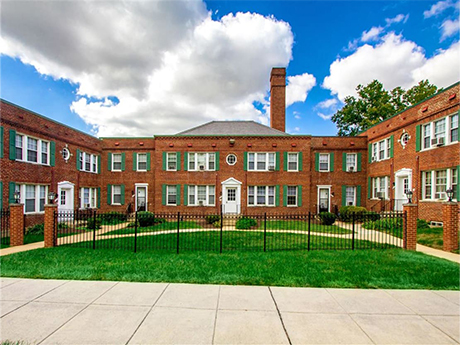Baltimore’s retail market is alive and well and has experienced something of a boom in retail activity, driven in large part by the thriving retail hubs in the city and in the surrounding suburbs. Demand for space continues to be robust and prospective tenants and investors alike are excited to be part of the Baltimore market. But the reasons why are more nuanced than simply piggybacking off the overall growth that brick-and-mortar retail is seeing across the country. Baltimore is a bargain One of the causes is the terrific value that Charm City offers when comparing prices to the major metropolises of Washington, D.C., to the south and Philadelphia to the north. The Baltimore MSA offers attractive demographics and strong retail fundamentals, making it a prime target for local, regional and national investors. A great example is the sale by KLNB’s Retail Capital Markets team of Arbutus Shopping Center in fall 2024, a 88,000-square-foot, grocery-anchored center that attracted significant demand due to its Baltimore County location, sub-$20 million price point and the broader market’s interest in grocery-anchored retail assets. Due to these robust conditions and factors, among other reasons, owners are hesitant to sell — despite the substantial interest …
Market Reports
Key Bridge Collapse Puts Infrastructure, Baltimore Industrial Market’s Fundamentals in Focus
by John Nelson
A major attraction within the Baltimore industrial real estate market has historically been the Port of Baltimore, as it is the most inland port on the East Coast, ranks in the top 20 nationally for tonnage and top 10 for dry bulk and attracts users and investors for its impressive capabilities. Closing on the end of first-quarter 2025, here are a few noteworthy project and market updates: March 26, 2024: The Key Bridge collapsed due to a physical collision from the container ship Dali. The bridge collapse was a tragic event with six lives lost and shipping (both in and out) being blocked for nearly three months as crews cleared the debris. $2B Key Bridge rebuild: Maryland Gov. Wes Moore unveiled the new design for rebuilding the bridge in February. The bridge is anticipated to deliver by fall 2028 and comes with enhanced capabilities, such as a 45-foot height increase and a 300-foot width increase for the shipping channel when compared with the previous design. Kiewit Infrastructure estimates the overall project will cost $2 billion. Howard Street Tunnel: As part of nearly $500 million directed toward local infrastructure projects, CSX recently kicked off the long-awaited Howard Street Tunnel project being …
The national office market continues to face headwinds in the wake of the COVID-19 pandemic, and Baltimore is no exception. Shifting tenant preferences and the city’s evolving economic landscape have created challenges, with rising vacancy rates in some submarkets. However, recent trends suggest that Baltimore’s office sector is stabilizing, with positive momentum in key areas. Changing office landscape For decades, Baltimore’s office market was defined by two primary submarkets: the traditional central business district (CBD) that is centered around Charles, Saint Paul/Light and Baltimore streets, and the Inner Harbor. The CBD was home to corporate giants such as Alex. Brown & Sons (now part of Deutsche Bank), USF&G (now part of St Paul Insurance), T. Rowe Price and Maryland National Bank (now part of Bank of America). In the 1980s, the Inner Harbor emerged as a national model for waterfront redevelopment, attracting major tenants and commanding some of the city’s highest occupancy rates. The early 2000s saw another shift with the rise of Harbor East and later Harbor Point, both of which drew high-end office tenants and further pulled demand toward the waterfront. More recently, Baltimore Peninsula has emerged as the next major office and mixed-use submarket. Historically, vacancies created …
By Christine Espenshade of Newmark Baltimore is an often-overlooked gem of a city along the Northeast Corridor between Washington, D.C., and New York City. This waterfront town is home to two major sports teams, a world-class symphony and art museums that rival those in the best cities around the world. Baltimore is more often referenced as the location for various crime TV shows rather than being known as home to two of the top medical facilities in the world — Johns Hopkins Hospital and the University of Maryland Medical System — Johns Hopkins University, and headquarters for famous companies such as Under Armour, T. Rowe Price and McCormick Spices. The multifamily market in Baltimore is also often overlooked by investors in favor of larger cities. However, to spur the development of top-quality rental products, Baltimore City and Baltimore County offer lucrative property tax abatements for new developments. The region continually sees consistent population growth due to the “eds and meds” nature of the economy, and the lower cost of living when compared to D.C. or Philadelphia attracts a well-educated workforce looking to enjoy the live-work-play lifestyle. The popularity of Baltimore for employers and employees is evident when considering the 35,000 …
Mirroring sentiments expressed at the year-end ICSC conference in New York City, with the national vacancy rate hovering around 5 percent and new concepts anxious to take a foothold in the area, there continues to be tremendous optimism for the retail sector in the greater Baltimore metropolitan region. Although ground-up development projects remain rare locally, several high-profile adaptive projects are in the works that are placing smiles on brokers’ faces because they have something to lease. Value-oriented retailers, together with quick-service restaurant (QSR) concepts, are showing the most activity. Adaptive reuse The redevelopment of the iconic Harborplace festival marketplace (more on that later) is grabbing all the headlines in Charm City, but the adaptive reuse of Baltimore’s Penn Station — the epitome of a transit-oriented development and the renovation of a historic industrial building at Riverside in South Baltimore — are happening now. Beatty Development Group and Cross Street Partners are partnering with Amtrak to transform the train station originally developed in 1911 into a mixed-use project combining 1 million square feet of commercial office, retail and residential space. Destination retail and restaurants are a central core of the program. Urban Pastoral and The Wilhide Family are transforming the 135-year-old …
While there has been a discernible dip in the volume of industrial leasing activity occurring in the greater Baltimore metropolitan area this past year, optimism remains high among owners and investors of this asset class given the diminishing volume of new product under construction, the still low 7.4 percent overall vacancy rate, record high — yet stabilizing — average asking rents of $10.54 per square foot net and the fact that 10 million people are not likely to soon move away from the Baltimore-Washington, D.C. corridor, the fourth-largest combined metropolitan statistical area in the country. Oh yes, spirits remain high following the Baltimore Orioles’ underdog ride to the top of the American East standings this summer. Never underestimate the power of a professional sports franchise to energize an entire region. The metro Baltimore industrial market consists of more than 3,600 buildings, totaling more than 266 million square feet of space that includes flex and industrial Class A, B and C buildings. Year-to-date, the market has yielded negative absorption of approximately 1 million square feet of space, including nearly 300,000 square feet this past quarter. The bad news of GXO Logistics shuttering a 571,000-square-foot distribution center in Harford County and laying …
National headlines report Amazon, arguably the largest warehouse user in the country, curtailing demand and, in some cases returning space back to landlords. This is sandwiched by stories detailing rising interest rates and land prices, stricter entitlement guidelines and NIMBYs working to apply the brakes on new developments. But, in “The Land of Pleasant Living,” (a Baltimore nickname made popular by the smart advertising of a local beer), the industrial revolution continues. And, for good reason. More than 2.3 million square feet of industrial/warehouse space was leased in the greater Baltimore metropolitan region in fourth-quarter 2022, with a net absorption of more than 1.2 million square feet of space, contributing to an overall vacancy rate of 4.5 percent. Additionally, more than 13 million square feet of space is currently under construction and rents have soared more than 50 percent over the past two years, with an average rent of just under $8 per square foot in late 2022. Significant leases signed in fourth-quarter 2022 included Baltimore International Warehousing & Transportation’s 244,304-square-foot lease at 5250-5330 Holabird Ave.; Amazon’s 241,962-square-foot lease at 1713 E. Patapsco Ave. and the 168,655-square-foot lease executed by Transdev at 1610 Wicomico St. Baltimore is contained within …
Retail is not dead. In fact, coming out of COVID-19, retail is arguably the strongest that it’s been in many years. According to S&P Global Market Intelligence data, in 2022 we saw a 13-year low in retail companies filing for bankruptcy. Here in Baltimore, we’re seeing extremely low vacancy rates and steady demand, which in turn, is cultivating a competitive environment. However, despite the challenges that retail has faced over the past several years, its resilience is where we continue to find plenty of reasons to be optimistic. A look back In March 2020, the phones stopped ringing and businesses shuttered for what was anticipated to be a few short weeks. We soon came to find that was not the case. Retail did struggle, significantly in some cases. Restaurants, service-based businesses, soft goods, fitness, entertainment and experiential concepts amongst many others, whether large corporate-owned or mom-and-pop users, struggled to stay afloat. And many did fail. Space came back on the market and concepts dwindled at an uncanny pace. But the so-called “retail apocalypse” — a common phrase that was originally coined because of the increased popularity of e-commerce — was, again, proved to be hyperbole. Retailers sought ways to enhance …
Unprecedented development is underway across the Baltimore metro area with more than $6.6 billion of infrastructure and major development projects in the pipeline, and office-using employment remains strong. More than 574,000 people are employed in a diverse set of employment sectors that require offices, including professional and business services, government, financial services and tech and information. The past year, unemployment fell in each Maryland submarket, with Baltimore dropping 140 basis points, which is similar to the national unemployment rate that decreased 150 basis points. In the second half of last year, several public sector agencies relocated into the Central Business District (CBD) from Midtown and Mount Vernon locations, pushing net absorption positive and vacancy negative. This helped state and local government tenants lead all sectors in leasing activity in the fourth quarter of 2022, accounting for 56 percent of all leases signed. The Maryland Department of Health signed the largest lease of the quarter with its new 463,000-square-foot lease at 300 N. Greene St. Other State of Maryland relocations include Department of Labor, Office of the Comptroller, Department of Budget & Management, Department of Planning and Department of Aging. Combined, these state government tenants leased 761,000 square feet in the …
Affordable HousingDistrict of ColumbiaMarket ReportsMarylandMultifamilySoutheastSoutheast Market ReportsVirginia
More Affordable Housing Options Needed in Greater D.C. Region, Says Fossi of Enterprise Community Development
by John Nelson
WASHINGTON, D.C. — In 2019, the Metropolitan Washington Council of Governments issued a report stating that the D.C. region — comprising the city, Northern Virginia and suburban Maryland — needed to add 320,000 more housing units between 2020 and 2030, and that at least 75 percent of this new housing should be affordable to low- and medium-income households. Rob Fossi, senior vice president of real estate development at Enterprise Community Development, says the figure has only climbed in recent years due to macroeconomic and local challenges. “In the three years since that report was issued, this demand has only intensified while supply chain interruptions, interest rate spikes and competing resource challenges precipitated by the COVID-19 pandemic have all been challenges to maintain pace,” says Fossi. Enterprise Community Development, an affiliate of Enterprise Community Partners, is the top nonprofit owner and developer of affordable homes in the Mid-Atlantic with a portfolio spanning about 13,000 apartments that house more than 22,000 residents. The firm is actively developing and preserving affordable housing across the region in order to address the demand, which Fossi says shows no signs of abating anytime soon. “There is little doubt that the demand for quality affordable housing will …
Newer Posts


